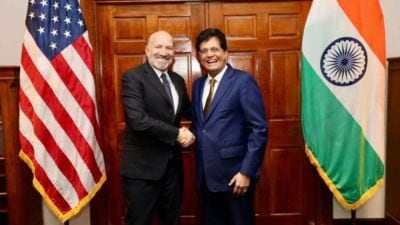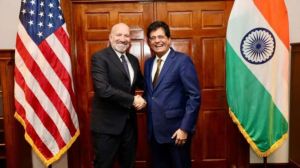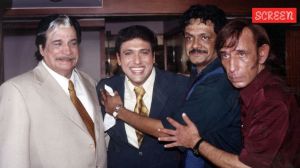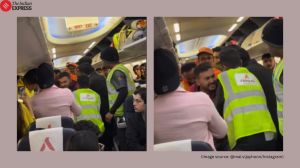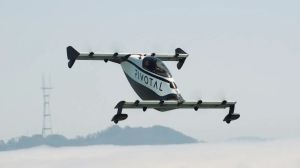‘There will be no indigenous population except seagulls’
Former truck driver Norbert L’Emclume, 65, sits in a shabby courtyard in Cassis, a shanty town in Port Louis, the capital of Mauritius....

Former truck driver Norbert L’Emclume, 65, sits in a shabby courtyard in Cassis, a shanty town in Port Louis, the capital of Mauritius. His wife hangs up laundry, while their grandchildren play on old mattresses laid across a narrow sewage ditch. In addition to serving as an impromptu playground, the mattresses are also where the 12 members of L’Emclume’s family sleep.
L’Emclume responds to questions about his origins with an elegiac poem often heard in Cassis: I left my country, my little island; I lost my family and my heart.”
Last week, the fate of L’Emclume and other former Chagossians was the subject of a case being argued halfway around the world, before a court in London. Once again, lawyers and judges in faraway Great Britain revisited the story of a destroyed paradise in the Indian Ocean — and a dirty chapter in the more recent history of the former colonial power.
It sounds like a story from the days of slavery, except that this tale begins only four decades ago. It’s the sordid saga of how Her Majesty’s Government “sanitised” the 60 square km (about 23 square miles) Chagos Archipelago in the Indian Ocean of its 2,000 inhabitants, including L’Emclume, whom top British diplomats dismissed as “some few Tarzans and Man Fridays”.
The Chagossians were slowly starved, pets were gassed before the eyes of the islanders’ children, and finally, the frightened folk were were crammed aboard freighters and dumped on the shores of Seychelles and Mauritius.
After paying $14 million — indirectly in the form of a discount on Polaris rockets purchased by Great Britain from the US and in 1966 — America leased the largest island in the archipelago. Diego Garcia soon became one of the US’s most important military bases the world over.
The choice of location was hardly accidental. From the beginning of the coldest phase of the Cold War — beginning in the early ’60s with the construction of the Berlin Wall and the Cuban Missile Crisis — the US had been ramping up its search for strategically located military bases. A base in the Indian Ocean, they reasoned, would help keep the Soviet Union and China at bay.
Films at Britain’s national archive, the Public Records Office in London, offer extensive documentation of the exploratory trips taken by US military personnel. For the Americans, the Chagos Islands were the perfect location. The only problem? They were inhabited.
The Chagossians originally came from Mozambique, Madagascar, Senegal and southern India. The descendants of slaves, they worked on the coconut plantations and made a living trading in lamp oil derived from copra, to light the lamps of Seychelles and Mauritius. Indeed, the Chagos Islands were also known as the “Oil Islands”.
The plantation owners on the three largest islands, Diego Garcia, Peros Banhos and Salomon, had created a well-functioning infrastructure. There was a church, a school and even a small railway line. For husking and crushing 700 coconuts per person, per day, from 7 am to noon and perhaps in return for devotion to the church, all Chagossians are devout Christians.
There were houses and basic medical facilities on the three largest islands, Diego Garcia, Peros Banhos and Salomon. There were ponies and donkeys, pigs, poultry and house pets. In the afternoons there was ample fishing in the lagoons that fringed the islands. It was a simple, fulfilled life, and the islanders flew their loyalty to the Union Jack and the Chagossian coat-of-arms of three turtles, from the lowest roofs.
But the US had wanted Diego Garcia “swept clean” and that was that.
In order to avoid embarrassing questions by the UN over the fate of the local inhabitants, the British Foreign Office began weaving a web of lies and fabrications. According to one proposal, the Chagossians would be classified as migrant workers from Mauritius and the Seychelles, which would conveniently legitimise their deportation. But the plan was quickly discarded when the results of an anthropological study proved this absurd. Ultimately, the British decided simply to say nothing about the islanders’ whereabouts.
“I would advise a policy of quiet disregard — in other words, let’s forget about this one till the UN challenges it,” advised one civil servant in an internal memo. In 1966, top diplomat, Sir Paul Gore-Booth, issued the following instructions to his colleague, Dennis Greenhill: “We must surely be very tough about this… There will be no indigenous population except seagulls.”
When Great Britain granted its colony Mauritius, which also included Chagos, independence in 1968, the “Oil Islands” remained under London’s guardianship. The depopulation programme began in 1971 and ended in 1973, when the last Chagossians were forcibly deported and Diego Garcia was turned over to the US.
Thirty years on, about 5,500 Chagossians still live in exile — 4,500 in Port Louis, 650 in the Seychelles and 300 near London’s Gatwick Airport. Although London paid each deported Chagossian about 3,000 pounds in compensation, most of the islanders quickly slipped into poverty, succumbing to unemployment, drug addiction, alcoholism, prostitution, AIDS and high rates of suicide. The Creole word the Chagossians themselves use to describe their melancholic condition is “chagrin” — longing.
In 1998, and with the help of none other than Nelson Mandela’s attorney, Sydney Kentridge, Bancoult’s group launched a legal battle against the British government and soon discovered a treasure trove in the Public Records Office: the many handwritten classified notes that had sealed the fate of Diego Garcia.
In 2000, the High Court declared the deportations illegal and ruled that the displaced Chagossians were within their rights in seeking to return to the islands.
But the US had absolutely no intention of giving up “7.20 S, 72.25 E”, as the base is known in military circles. For the Americans, Diego Garcia is an indispensable launching pad for sorties over Afghanistan, Iraq and other destinations throughout half of Asia — an ideal hub for a powerful fleet of B-52 and Stealth bombers.
The island has a harbour that can accommodate 30 warships. It also has shooting ranges and other training facilities, crude oil and gasoline storage tanks. From its vantage point on Diego Garcia, Washington monitors the region’s tanker routes, as well as the activities of rising global players India and China. The island is home to about 4,000 troops, as well as civilian employees, mainly from Sri Lanka and the Philippines, but none from the Chagos Islands.
“Diego Garcia is experiencing steady growth, so as to meet professional and personal needs,” raves the US Marines’ website. But the archipelago is off-limits to visitors. With the exception of a British representative with little authority and the families of US military personnel, no one else is permitted to set foot on Chagos.
Diego Garcia does not tolerate any former coconut farmers returning to even just the neighboring islands, as they could “set up jamming transmitters and obstruct important military missions”.
As pressure mounted from both the Chagossians urging the implementation of the High Court order and the US to not do so, the British Foreign Office ran out of excuses and went for the jugular.
In a move once again befitting a totalitarian state, they got Queen Elizabeth II to initial a rarely-invoked Order in Council, essentially a royal decree that invalidates all previous court rulings while circumventing British Parliament. In June 2004, Her Majesty overruled the judgement of her kingdom’s own High Court in 2000 and banned the islanders from ever returning to their homeland.
“Was Her Majesty given a chance to read the order before she signed it?” asks Olivier Bancoult, president of the Chagos Refugees Group in Cassis, who appeared in London last week and has also filed cases in courts in Washington and Strasbourg. “Does she remember how London sent a fleet of ships to save 2,000 Falkland Islanders in 1982, while 2,000 Chagossians, subjects of the crown just as they were, were simply abducted?”
The Chagossians are asking the US to withdraw from Diego Garcia. They are well aware that they will remain British, eager to develop their islands into tourist havens but also grateful for any civilian employment at the US base. “We are a small people with no blue eyes, blond hair or an education,” says Bancoult. “But we beg the world to respect our dignity and help us go home.”
The author is South Asia Bureau Chief of German newsmagazine Der Spiegel



- 01
- 02
- 03
- 04
- 05


